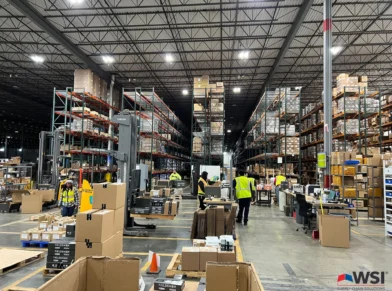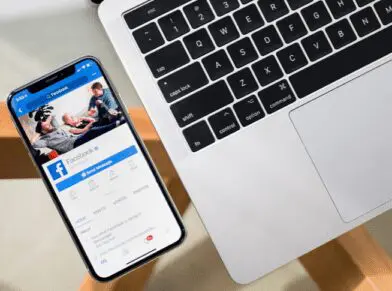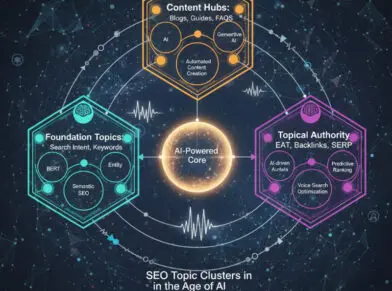BUILDING BUYER PERSONAS: IT’S PERSONAL

Did you have an imaginary friend as a kid? If so, you probably remember them feeling a lot more real than a pretend person. In fact, if asked, you could have probably listed off everything about them from where they lived to what they ate for breakfast.
Buyer personas are the grown-up versions of this childhood pastime. They’re no less detailed (or fun!) and can help you actually make contact with the types of audiences that match your creative vision.
Thinking of creating buyer personas for your business? Here’s how to do them well.
Why are Buyer Personas Important?
We live in a world where content is king and paid advertising campaigns are the best way to speak directly to your target audience. But spending marketing monies to get in front of a random collection of consumers without first understanding who is most likely to buy your products and services is bad business. It’s like calling a wrong number and expecting them to contribute to your best friend’s birthday present.
Buyer personas help you do a deep and necessary dive into your core customer groups – the ones most likely to care about your brand. Though they’re mostly fictitious, these characterized generalizations are a great way to hone your marketing messages and zero in on your ideal market segments.
When you fully comprehend who your potential buyers are and what motivates them to purchase, you can hyper-target your PPC and social media campaigns, maximize your advertising ROI, and create compulsively compelling content.
The Buyer Basics
At Globe Runner, we make our buyer personas as thorough as possible. We start by fleshing out general demographics like the personas age, where they live, and how much they earn per year. At a minimum, you should have the following for each of your buyers (most companies have more than one profile).
- Age: We like to do a range of 10-15 years.
- Gender: Segmenting between males and females is one of the biggest distinctions when understanding your target market.
- Education: Are they high school graduates, do they have some college, or is your target audience all masters level or higher?
- Title/Income: Research sites like Glassdoor.com to get an idea of potential titles and annual earnings.
- Location: Dallas, Texas might be sufficient, but really think about whether they’re a family more likely to live in a suburb, or a young professional who prefers 75201 proper.
You might think e-commerce and the internet lessen the importance of location, but you’re wrong. In fact, it might be a good idea to add in an excluding location. This is especially true if you’re running a pay-per-click campaign. For instance, if you’re selling to farmers in Muenster, you might actually want to omit urban areas or cities like Dallas with larger population sizes.
Making Personas Personal
Where we really start to drill down is in the psychographic (psychological demographic) details. This is when your persona will really come to life. In our opinion, it’s also the most fun part. It allows you to occupy the headspace of another person and think as someone other than yourself in order to build the relationship with your customers IRL.
- Persona: These are the overarching angles like: teen girl end user or older farmer wholesaler.
- Interests: What would they spend their disposable time and income on? Travel? Fashion? Technology? Sports? Politics? Literature? DIY crafts?
- Personality: Are they open-minded or traditional? Informed or influential? Cautious or risk-taking? Describe them with a handful of adjectives.
- Profile: Here’s where you really create the “character.” What are they all about? Give us the highlight reel of what’s most important to him or her.
- Day-to-day: Then, describe a day in the life. From sunup to sundown, how is it they conduct the hours of their day. Are they just starting their career or bringing it to a close? Do they pour their energies into their families or are they devoted to getting back in shape?
- Goals: Think about how your product could specifically help them meet some of these goals. Do you provide a service that can give them more time with family? Do you sell a product that can help them elevate their social status?
- Challenges: What would prevent them from buying with you? Do they have limited internet access? Are they on a tight budget? Is their taste very specific or brand loyal?
- Objections/their questions: Try to pretend you were creating a FAQ for your website. Take the challenges listed above and create questions out of them.
Once you have given life to your persona, make sure to give them a name and add a photo. You’ll be surprised at how much you can connect with this fabricated person staring back at you.
Connecting to the Consumer
Your final step is to think through how you’ll make the rainbow connection.
- Why your product is right for them: Which needs or goals does it meet? How does it solve problems they didn’t realize they had?
- Elevator Pitch: You have just a few seconds to catch their ear. All the better if you can work in a little curiosity mixed with a call-to-action (CTA).
- How we reach them and convert to a sale: Here’s when you get to discover where your consumer congregates. Are they obsessed with Instagram contests or more likely to respond to an email campaign advertising a sale or discount?
In this last section, you’ll start to see some of your traditional and digital marketing strategies emerge. Just know that it may change over time as you review more sales data. That’s not only normal, it’s encouraged!
Point is, if you’ve ever written fiction, acted in a play, or had an imaginary friend you already know a bit about building buyer personas. Done right, they’ll help you be more responsive to your customers and get your brand in front of your ideal audience. Don’t forget to be creative, get personal, and have fun with them!
Need some help identifying your core consumers? Let us package your personas instead!


















